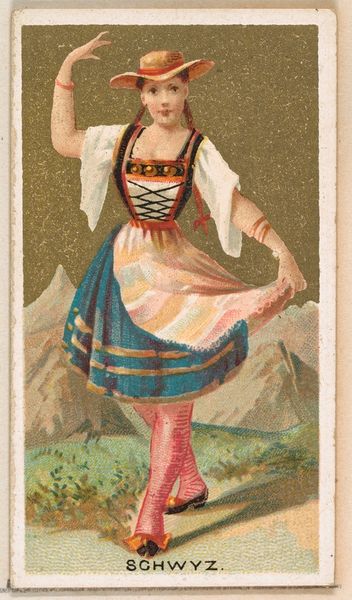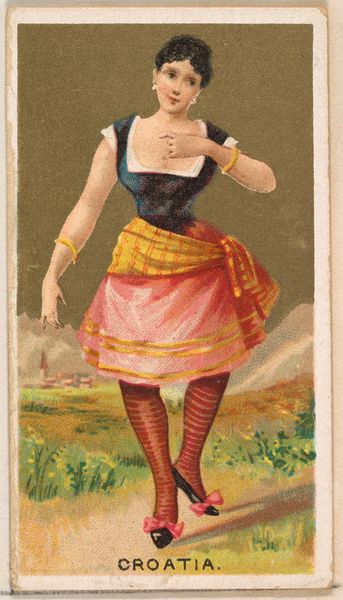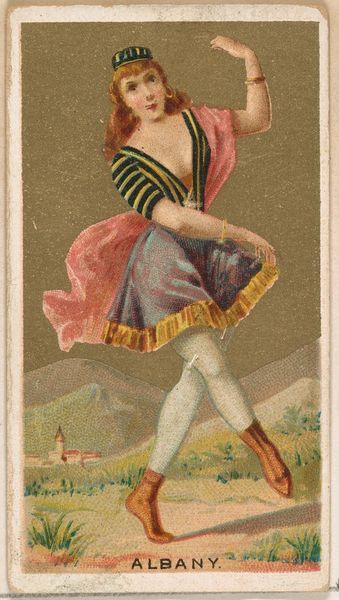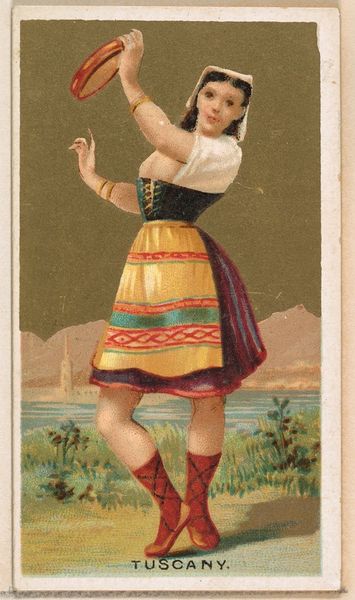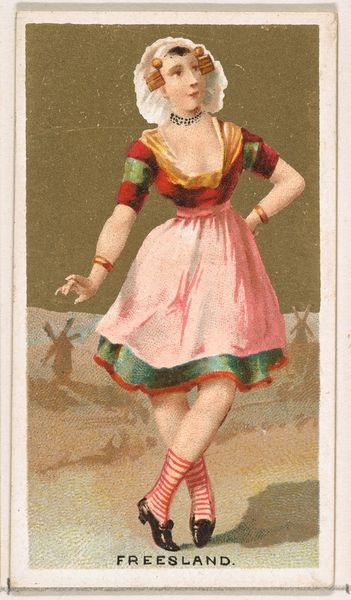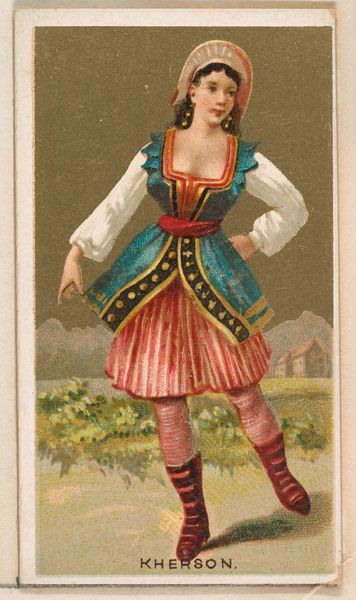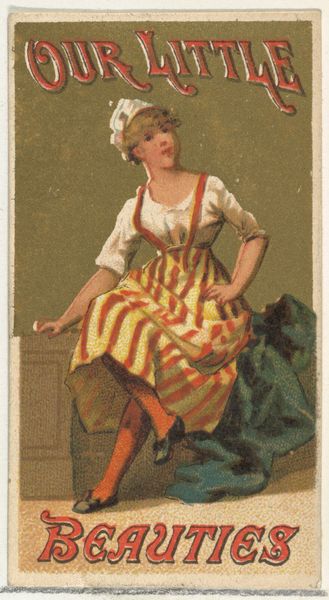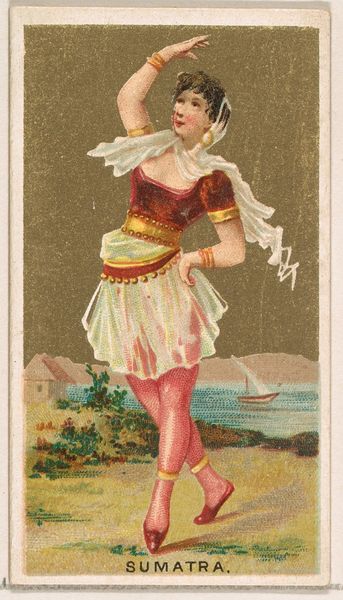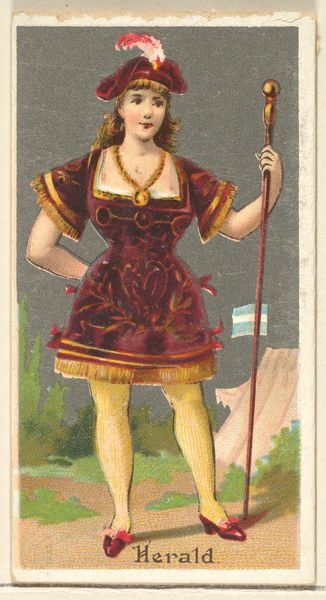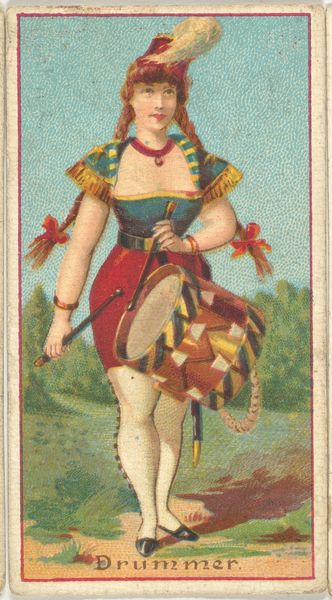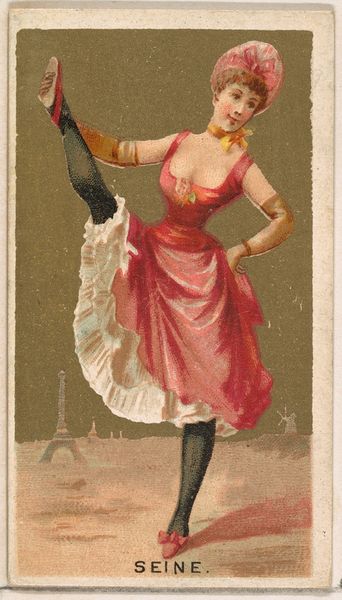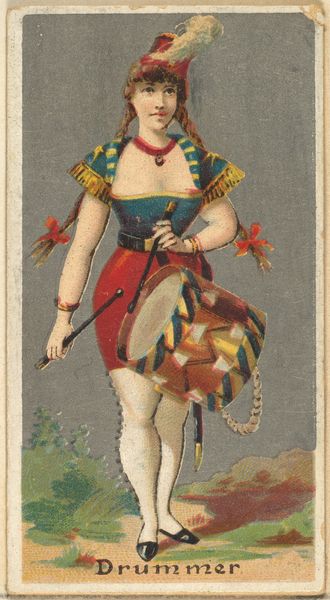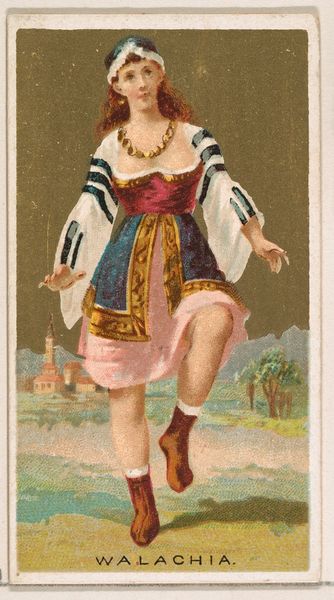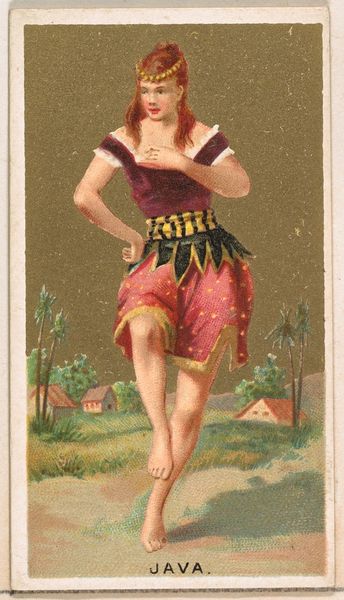
Carinthia, from the Dancing Girls of the World series (N185) issued by Wm. S. Kimball & Co. 1889
0:00
0:00
drawing, print, watercolor
#
portrait
#
drawing
# print
#
caricature
#
figuration
#
watercolor
#
watercolour illustration
#
decorative-art
#
watercolor
Dimensions: Sheet: 2 11/16 × 1 1/2 in. (6.8 × 3.8 cm)
Copyright: Public Domain
Editor: Here we have "Carinthia, from the Dancing Girls of the World series," created in 1889 by William S. Kimball & Co. It's a watercolor and print piece. Initially, I'm struck by how it romanticizes…almost exoticizes, perhaps… the idea of a 'dancing girl'. What do you see in this piece, considering its historical context? Curator: That’s a great starting point. It’s crucial to view this image through the lens of 19th-century colonialism and the construction of the 'other'. Consider the title itself: “Dancing Girls of the World.” It suggests a Western gaze classifying and consuming cultures. It almost feels like cultural tourism reduced to a pretty image. Who has the power to represent whom, and for what purpose? What stories are being told, and whose voices are missing? Editor: I hadn't really thought about it like that. It seems so...innocent on the surface. Was this part of a larger trend? Curator: Absolutely. Images like these were often used in advertising and entertainment, circulating and reinforcing stereotypes about different cultures. How does this specific depiction of “Carinthia” play into broader narratives about European identity and nationalism? And what assumptions are being made about gender and performance in this context? Editor: So it's not just a picture of a dancer, but a statement about how different cultures were being perceived, or rather, misperceived at the time. Curator: Exactly. It’s a visual representation of power dynamics. I would even encourage exploring the concept of cultural appropriation at that time: these dancers are displayed almost like collectibles. Editor: I’m starting to see how a seemingly harmless image can carry so much cultural weight. Thank you for helping me see past my initial impressions. Curator: Of course. It’s in these layers that art fosters understanding. It's about connecting the art historical context to larger social and political issues. It allows us to question not just the artwork itself, but also the systems that shaped its creation and reception.
Comments
No comments
Be the first to comment and join the conversation on the ultimate creative platform.
